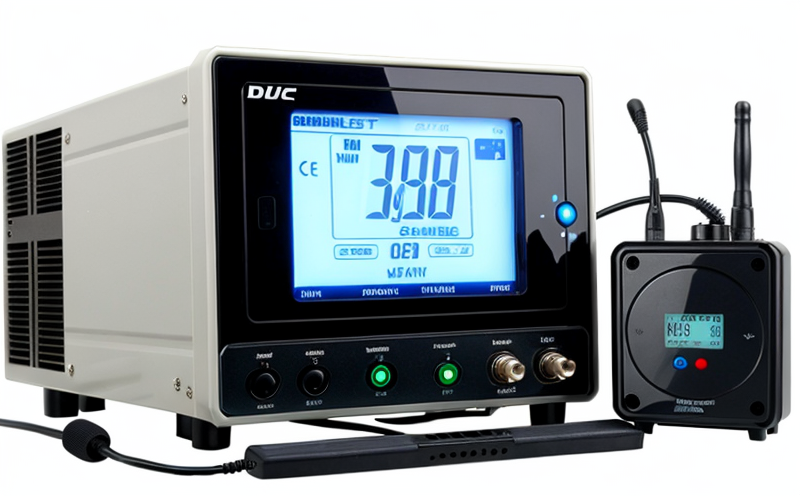ETSI EN 302 262 Satellite Earth Stations RF Testing
The ETSI EN 302 262 standard is a crucial document that outlines requirements for the radio frequency (RF) testing of satellite earth stations. This standard ensures that all earth station equipment complies with international standards and operates safely within defined parameters, which are essential to prevent interference and ensure reliable communication.
The testing process involves several key components: RF emissions, antenna characteristics, and compliance with spectral masks. The primary goal is to verify that the earth stations meet stringent emission limits set forth by ETSI EN 302 262. This includes ensuring that the equipment does not cause harmful interference to other radio services.
Testing begins with a comprehensive review of the design and specifications of the satellite earth station. Engineers must ensure that all components are compatible and that there is no potential for malfunction or interference. Once the system passes initial checks, it undergoes detailed RF measurements using advanced instruments such as spectrum analyzers and network analyzers.
Testing for spectral mask compliance involves measuring the transmitted signal power against predefined limits specified in ETSI EN 302 262. This step ensures that the earth station does not emit signals outside acceptable bandwidths, which could interfere with other satellite services or terrestrial communications.
The antenna characteristics test checks the efficiency and directivity of the antenna used by the earth station. This is critical for ensuring optimal performance in both transmission and reception modes. The test involves measuring parameters such as gain, beamwidth, and polarization.
In addition to these technical tests, compliance with ETSI EN 302 262 also requires documentation of all test results. Detailed reports are generated that include raw data from the measurements, calculations, and interpretations. These documents serve as evidence that the earth station meets all specified criteria.
The testing process is not just about compliance; it also plays a vital role in ensuring the reliability and safety of satellite communications systems. By adhering to ETSI EN 302 262, operators can be confident that their equipment will perform consistently under various conditions, thereby enhancing overall system performance.
Compliance with this standard is essential for businesses operating within the telecommunications sector as it helps maintain interoperability across different networks and ensures compatibility with international standards. For quality managers and compliance officers, ensuring adherence to ETSI EN 302 262 can reduce risks associated with non-compliance penalties or disruptions in service.
For R&D engineers involved in the development of new satellite earth station technologies, understanding the requirements outlined in this standard is crucial. It provides a framework for innovation while maintaining high standards of safety and performance.
Industry Applications
- Celestial satellite communications
- Satellite-based navigation systems
- Telemedicine services via satellites
- Remote sensing applications using satellites
- Broadband internet access provided by satellites
The ETSI EN 302 262 testing process plays a pivotal role in these industries, ensuring that earth stations operate efficiently and safely. For example, in the case of satellite-based navigation systems like GPS or GLONASS, rigorous RF testing ensures accurate signal transmission and reception, which is vital for reliable positioning services.
In telemedicine applications, where patients rely on real-time communication with healthcare providers, it is imperative that earth stations maintain stable connections. By adhering to ETSI EN 302 262 standards, operators can guarantee consistent performance during critical moments such as remote consultations or emergency medical care.
Remote sensing involves collecting data from space for various purposes including environmental monitoring and disaster management. Properly tested earth stations ensure the integrity of this vital information, helping authorities make informed decisions about resource allocation and crisis response.
Broadband internet access through satellites offers an alternative solution to traditional ground-based infrastructure in areas where terrestrial networks are either unavailable or insufficient. Ensuring that these systems meet stringent RF testing requirements is crucial for delivering high-quality service to end-users.
Environmental and Sustainability Contributions
- Sustainable satellite communication infrastructure
- Promotion of green technologies in the telecommunications sector
- Emission reduction through optimized signal transmission
- Minimization of interference with terrestrial networks
The ETSI EN 302 262 standard contributes significantly to environmental sustainability by promoting efficient use of resources and minimizing negative impacts on ecosystems. By ensuring that satellite earth stations operate within specified limits, the standard helps reduce emissions and prevent harmful interference.
One key aspect is the optimization of signal transmission to minimize power consumption and associated carbon footprints. This not only benefits individual operators but also contributes positively to global efforts towards reducing greenhouse gas emissions.
Promoting green technologies in the telecommunications sector aligns with broader goals of environmental protection and sustainable development. By adopting ETSI EN 302 262 standards, businesses can play a proactive role in fostering an industry that is both economically viable and environmentally responsible.
Use Cases and Application Examples
| Use Case | Application Example |
|---|---|
| Testing of new satellite earth station designs | Verification that a newly developed earth station meets all specified RF performance criteria before deployment. |
| Routine maintenance checks | Ensuring ongoing compliance with ETSI EN 302 262 after installation to detect any changes in system performance over time. |
| Interoperability testing between different satellite networks | Evaluating the ability of earth stations from various providers to communicate seamlessly across multiple networks. |
In addition to these specific use cases, ETSI EN 302 262 testing is integral to the broader process of developing and maintaining satellite communication systems. It ensures that all components work together harmoniously, contributing to a robust and reliable network infrastructure.
For instance, when deploying new satellite earth stations, rigorous testing according to this standard guarantees compatibility with existing networks while also ensuring compliance with international regulations regarding RF emissions. This approach fosters interoperability among different systems from various vendors, promoting a more unified global communication landscape.





